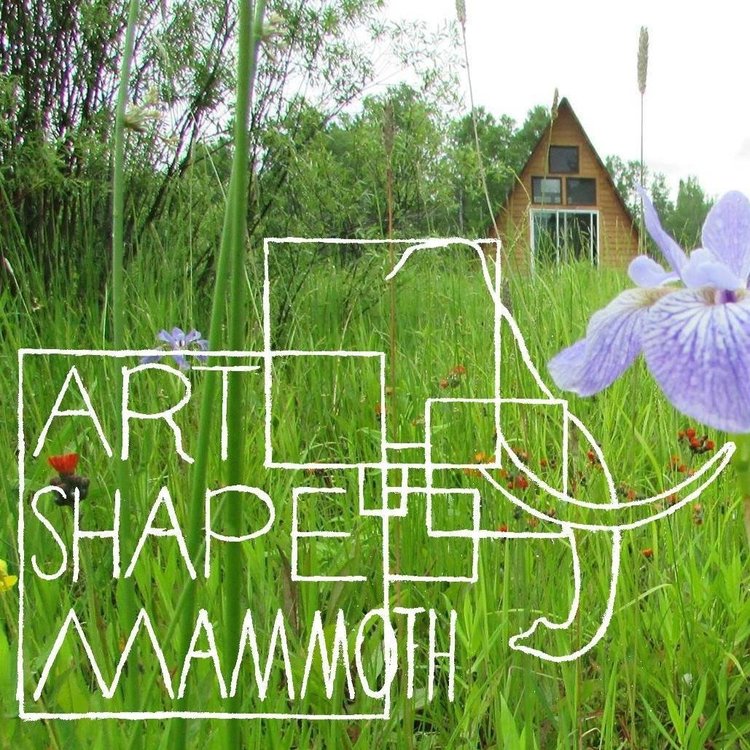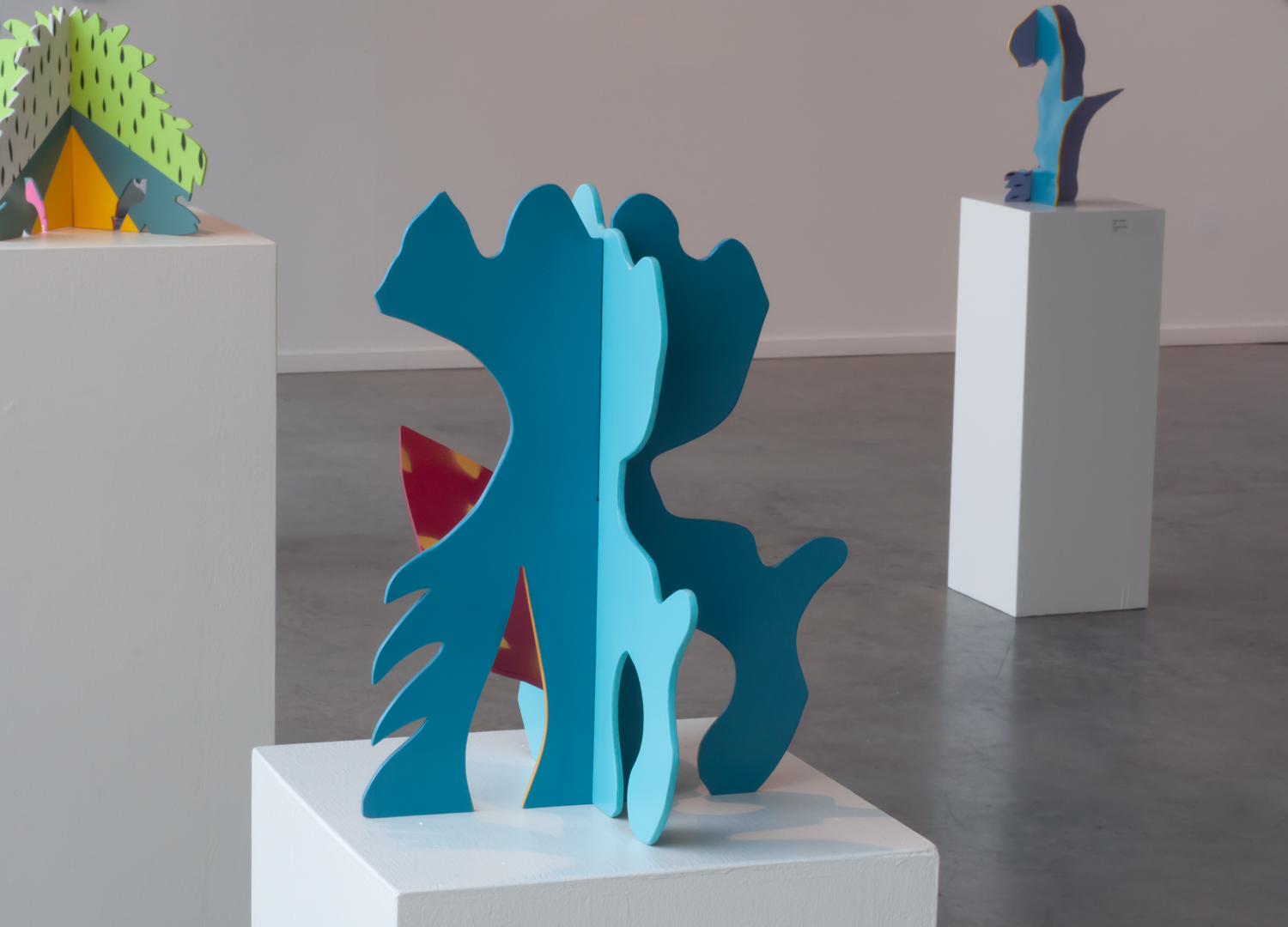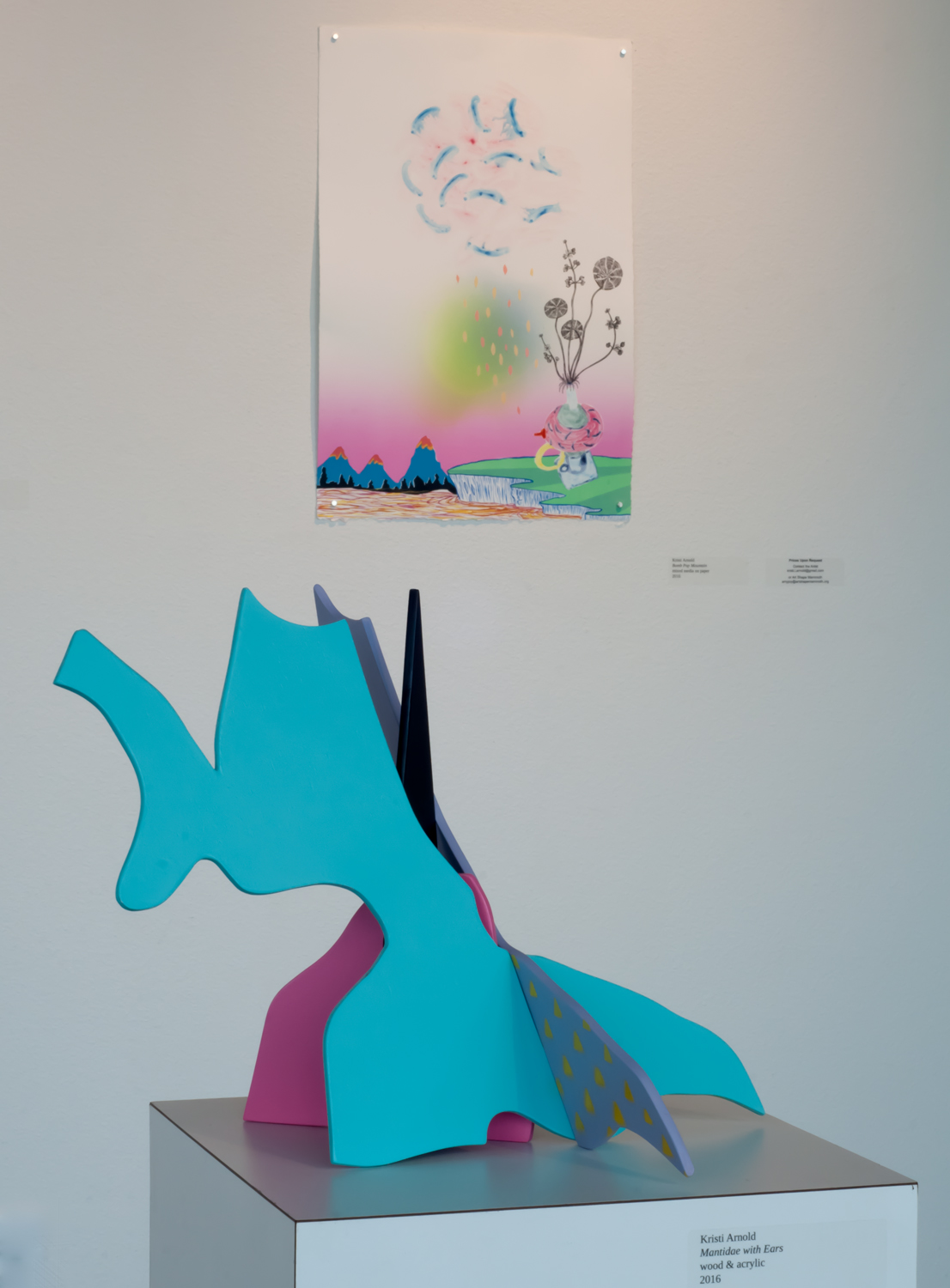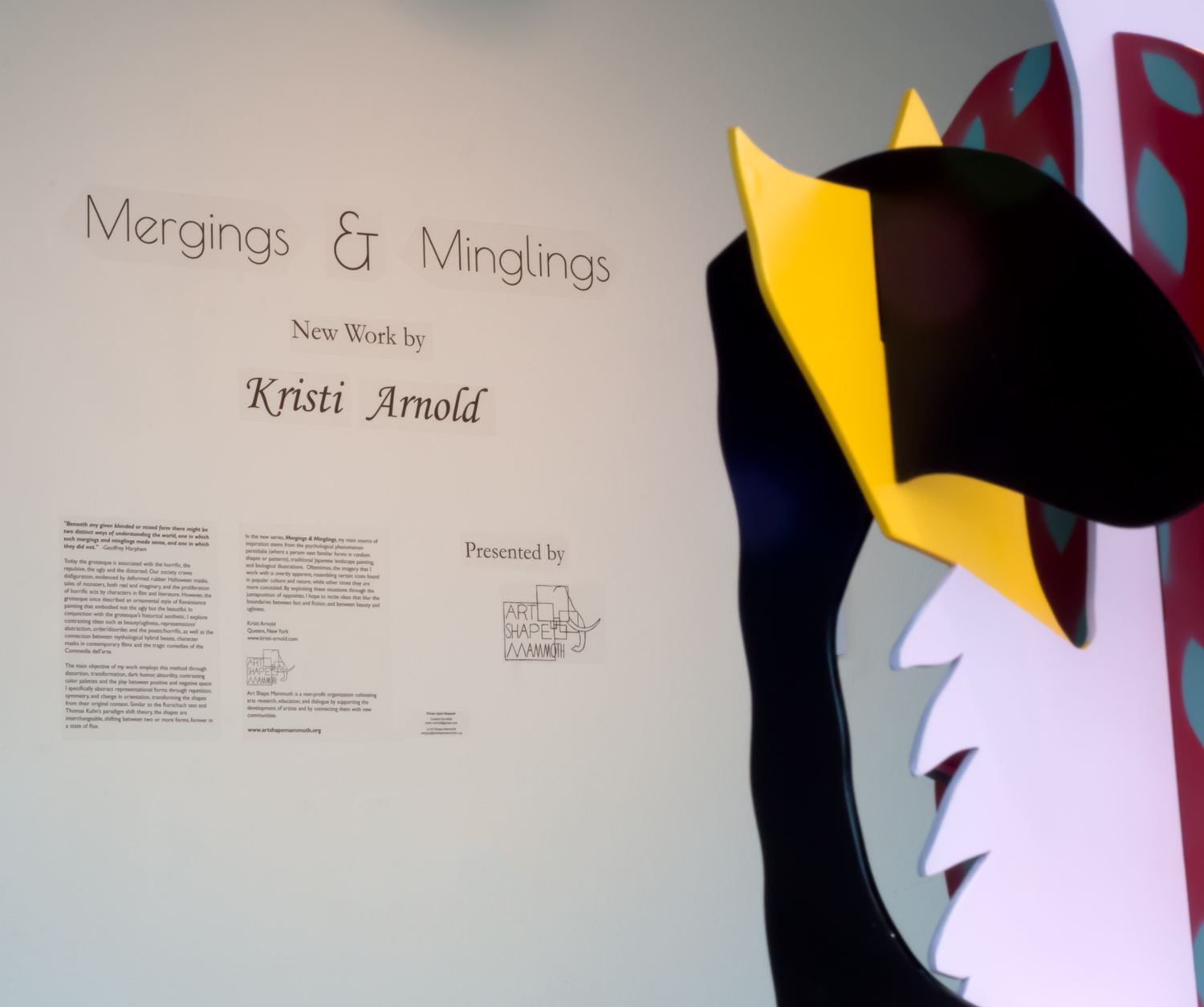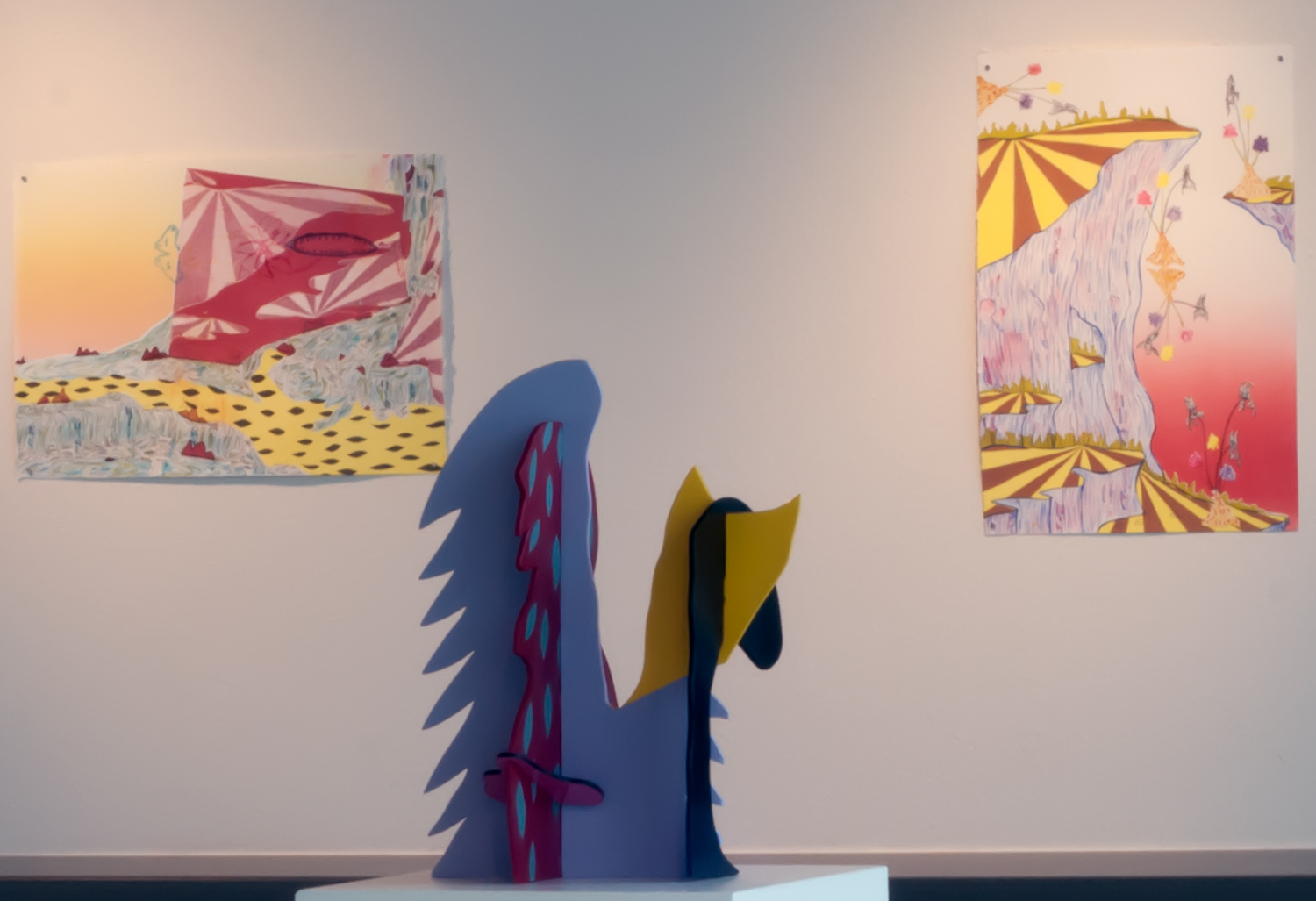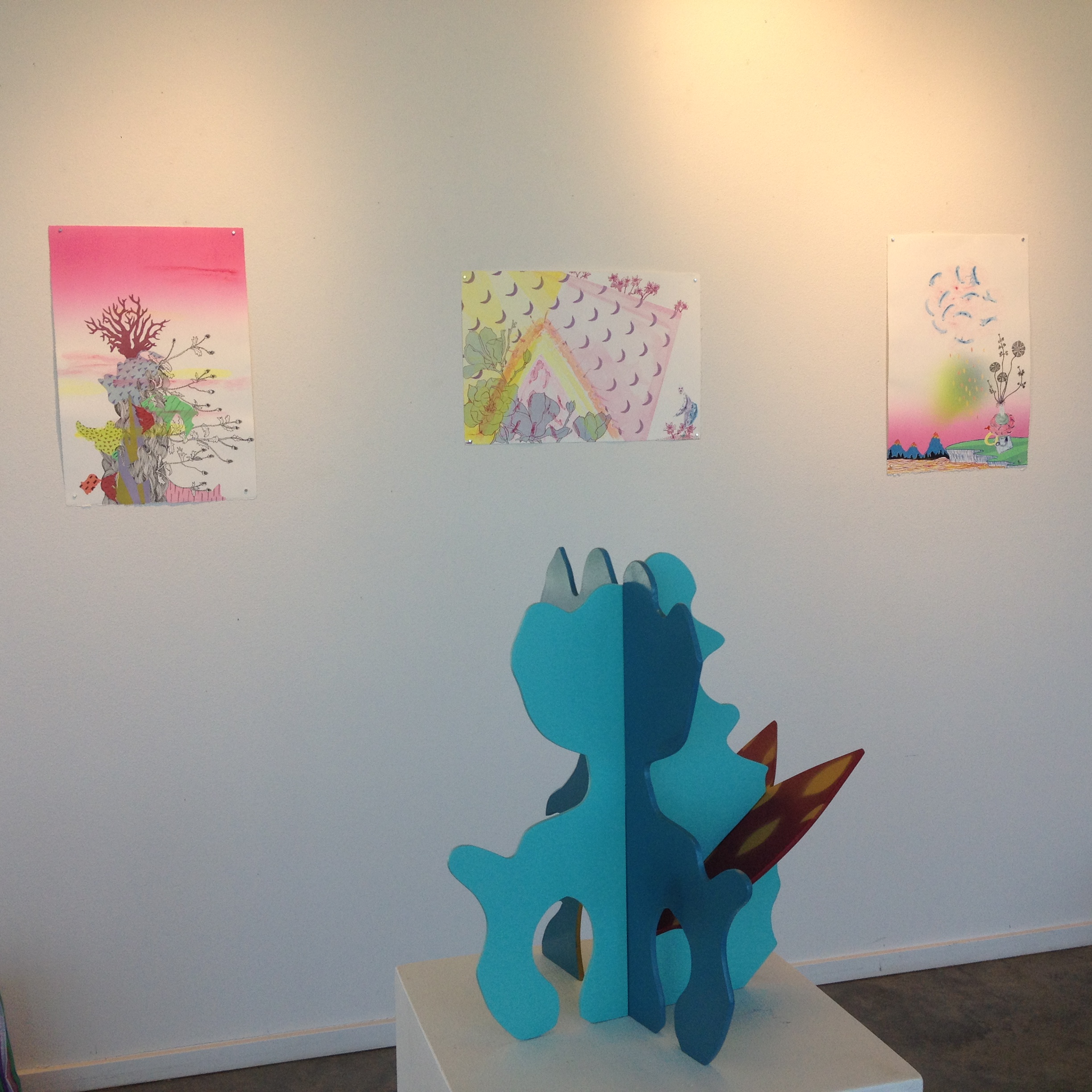Mergings & Minglings
An Exhibition of New Work by Kristi Arnold
Curated by Amy Joy Hosterman
Opening Reception Friday July 22nd, 6-10pm
With music by Chelsmosis and Badbwoy BMC
"Beneath any given blended or mixed form there might be two distinct ways of understanding the world, one in which such mergings and minglings made sense, and one in which they did not." - Geoffrey Harpham
Today the grotesque is associated with the horrific, the repulsive, the ugly and the distorted. Our society craves disfiguration, evidenced by deformed rubber Halloween masks, tales of monsters, both real and imaginary, and the proliferation of horrific acts by characters in film and literature. However, the grotesque once described an ornamental style of Renaissance painting that embodied not the ugly but the beautiful. In conjunction with the grotesque’s historical aesthetic, I explore contrasting ideas such as beauty/ugliness, representation/abstraction, order/disorder, and the poetic/horrific, as well as the connection between mythological hybrid beasts, character masks in contemporary films and the tragic comedies of the Commedia dell'arte.
The main objective of my work employs this method through distortion, transformation, dark humor, absurdity, contrasting color palettes and the play between positive and negative space. I specifically abstract representational forms through repetition, symmetry, and change in orientation, transforming the shapes from their original context. Similar to the Rorschach test and Thomas Kuhn’s paradigm shift theory, the shapes are interchangeable, shifting between two or more forms, forever in a state of flux.
In the new series, Mergings and Minglings, my main source of inspiration stems from the psychological phenomenon pareidolia (where a person sees familiar forms in random shapes or patterns), traditional Japanese landscape painting, and biological illustrations. Oftentimes, the imagery that I work with is overtly apparent, resembling certain icons found in popular culture and nature, while other times they are more concealed. By exploiting these situations through the juxtaposition of opposites, I hope to incite ideas that blur the boundaries between fact and fiction, and between beauty and ugliness.
Kristi Arnold, Queens, NY
